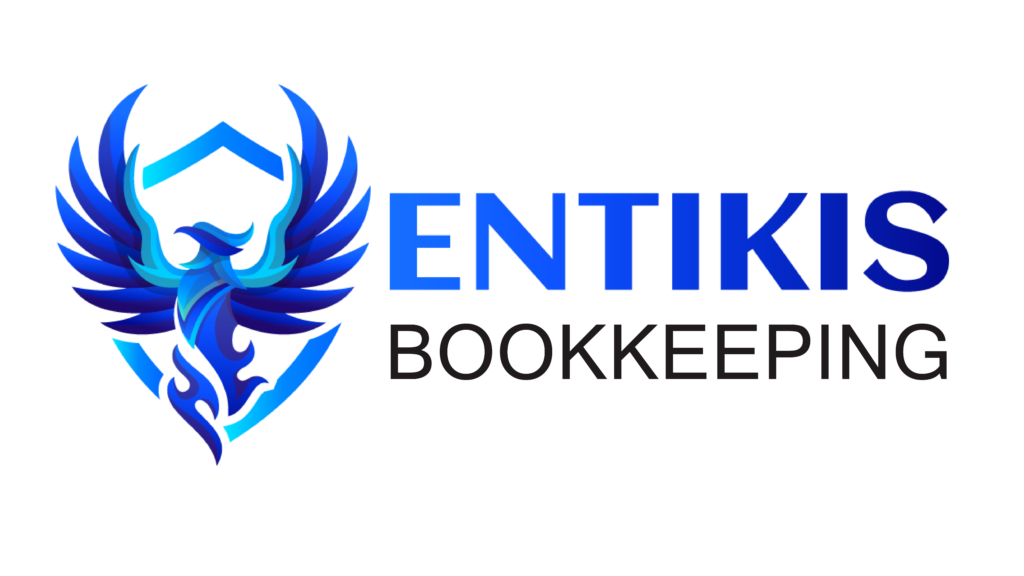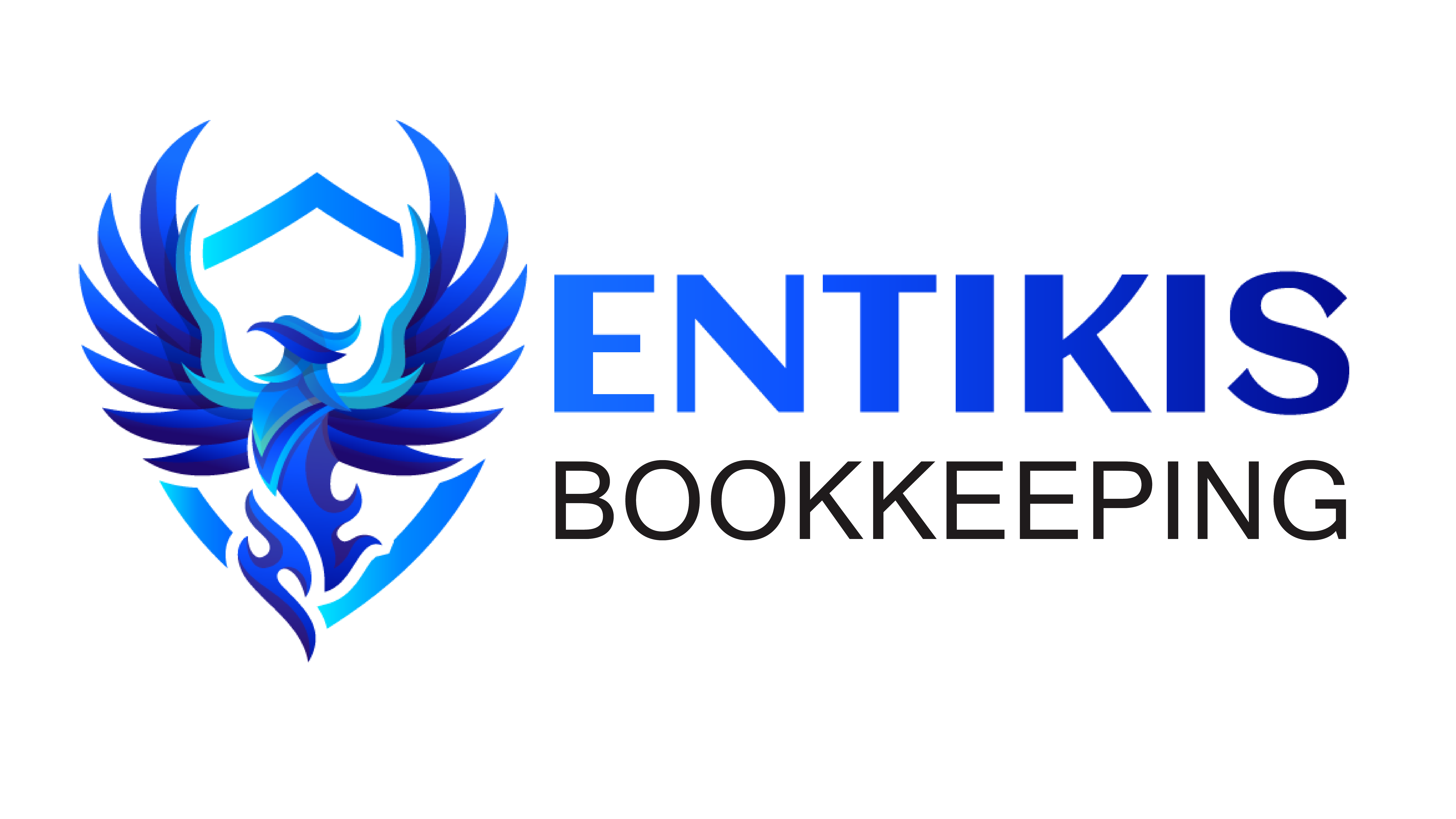
Depreciation Method: A Deep Dive into Straight-Line, Declining Balance, and Units of Production Methods
Depreciation is a crucial concept in accounting that allows businesses to allocate the cost of an asset over its useful life. When it comes to managing your company’s finances, understanding different depreciation methods is essential. In this article, we’ll unravel the mysteries of depreciation and explore three common methods: Straight-Line, Declining Balance, and Units of Production. If you’re a business owner in Fort Worth, Tarrant County, looking for expert advice on bookkeeping, Entikis Bookkeeping has you covered.
Straight-Line Depreciation
is a popular accounting method utilized by businesses in Fort Worth and beyond due to its simplicity and predictability. Under this approach, the cost of an asset is evenly spread out over its useful life, resulting in a consistent reduction in its value each accounting period. This method assumes that the asset depreciates at a constant rate throughout its useful life, making it easy to calculate and understand for financial reporting purposes.
The calculation for straight-line depreciation is straightforward. First, the initial cost of the asset is determined, including any expenses related to acquiring and preparing it for use. This initial cost is then divided by the asset’s expected useful life in years. The resulting figure represents the amount of depreciation expense recognized each year.
For example, suppose a company purchases a piece of equipment for $10,000 with an expected useful life of five years. Using the straight-line method, the annual depreciation expense would be $10,000 divided by 5, which equals $2,000 per year. This $2,000 depreciation expense would be recorded on the company’s income statement each year until the asset is fully depreciated.
One of the key advantages of straight-line depreciation is its simplicity. It requires minimal calculations and is easy for both accountants and business owners to understand. This simplicity can save time and reduce the likelihood of errors in financial reporting.
Additionally, the predictability of straight-line depreciation makes it advantageous for budgeting and forecasting purposes. Since the depreciation expense remains constant each year, businesses can accurately predict their future expenses related to the asset. This predictability helps in planning for replacement or upgrades of assets and in determining the impact on cash flow and profitability.
Furthermore, the straight-line method provides a systematic and equitable way to allocate the cost of an asset over its useful life. By spreading the cost evenly over time, this method ensures that the expenses associated with the asset are matched with the revenues it generates, resulting in more accurate financial statements.
In conclusion, the straight-line depreciation method offers simplicity, predictability, and fairness in allocating the cost of assets for businesses in Fort Worth and beyond. Its ease of use and reliability make it a preferred choice for many companies when accounting for the depreciation of their assets.
Declining Balance Depreciation
often referred to as the Double Declining Balance method, is a commonly used accelerated depreciation technique. Unlike the Straight-Line method, which allocates the same amount of depreciation expense each year, the Declining Balance method allows for a higher depreciation expense to be recognized in the earlier years of an asset’s life, gradually decreasing over time. This approach is particularly advantageous for companies in Tarrant County and elsewhere, as it can result in significant tax benefits and better reflects the actual wear and tear of certain assets.
The Double Declining Balance method is named as such because it depreciates assets at twice the rate of the Straight-Line method. To calculate depreciation using this method, the asset’s book value at the beginning of the year is multiplied by a predetermined depreciation rate, typically 2/n, where n is the asset’s useful life in years. This results in a larger depreciation expense in the first year, with the amount gradually decreasing each subsequent year until the asset’s value is fully depreciated.
For example, let’s consider a piece of machinery with an initial cost of $50,000 and a useful life of five years. Using the Double Declining Balance method with a depreciation rate of 40% (2/5), the depreciation expense for the first year would be $50,000 * 40% = $20,000. In the second year, the depreciation expense would be calculated based on the remaining book value of the asset after the first year’s depreciation. If the asset’s book value at the beginning of the second year is $30,000 ($50,000 – $20,000), the depreciation expense for the second year would be $30,000 * 40% = $12,000, and so on.
One of the primary advantages of the Declining Balance method is its ability to better match depreciation expenses with the actual usage of certain assets. Assets such as machinery, equipment, and vehicles often experience more significant wear and tear in their earlier years of use, leading to higher maintenance costs and a faster decline in value. By front-loading depreciation expenses, the Declining Balance method reflects this accelerated depreciation pattern more accurately, allowing businesses to better align their financial statements with the economic realities of asset usage.
Additionally, the accelerated depreciation provided by the Declining Balance method can result in significant tax benefits for businesses, particularly in the earlier years of an asset’s life. By deducting a higher depreciation expense upfront, companies can reduce their taxable income and lower their tax liability, providing valuable cash flow benefits that can be reinvested into the business or used for other purposes.
Furthermore, the Declining Balance method can help businesses in Tarrant County and elsewhere improve their financial reporting accuracy and transparency. By reflecting the true economic depreciation of assets, companies can provide stakeholders with a more realistic picture of their financial performance and asset value. This can enhance investor confidence and facilitate better decision-making regarding asset management and capital allocation.
However, it’s essential to note that while the Declining Balance method offers several advantages, it may not be suitable for all assets or industries. Certain assets may depreciate at a more consistent rate over their useful lives, making the Straight-Line method a more appropriate choice. Additionally, the accelerated depreciation provided by the Declining Balance method may result in lower asset values on the balance sheet, which could impact financial ratios and creditworthiness.
In conclusion, the Declining Balance depreciation method, also known as the Double Declining Balance method, offers businesses in Tarrant County and beyond a valuable tool for accurately reflecting the depreciation of certain assets. By front-loading depreciation expenses and better aligning with the economic realities of asset usage, this accelerated depreciation technique can provide tax benefits, improve financial reporting accuracy, and enhance decision-making regarding asset management. However, businesses should carefully consider their specific circumstances and consult with accounting professionals to determine the most appropriate depreciation method for their assets.
Units of Production Depreciation
also known as the activity-based depreciation method, is a variable depreciation technique that charges depreciation expenses based on the actual usage of an asset rather than its time in service or straight-line allocation. This method is particularly advantageous for businesses in Fort Worth and beyond with assets that vary in usage, as it provides a more accurate reflection of depreciation based on the asset’s activity levels.
Under the Units of Production method, depreciation expenses are calculated based on the number of units produced, miles driven, hours used, or any other measure of activity relevant to the asset. The total depreciation expense for the accounting period is then determined by multiplying the activity level by the per-unit depreciation rate. This approach ensures that assets experiencing higher levels of activity incur higher depreciation expenses, while those with lower usage rates are charged accordingly.
For example, let’s consider a delivery truck used by a logistics company in Fort Worth. Instead of depreciating the truck evenly over its useful life, which may not accurately reflect its wear and tear, the company can utilize the Units of Production method to calculate depreciation based on the number of miles driven. If the truck’s estimated useful life is 100,000 miles and its initial cost is $50,000, the per-mile depreciation rate would be $0.50 ($50,000 / 100,000 miles). If the truck travels 20,000 miles in a given year, the depreciation expense for that year would be $0.50 * 20,000 = $10,000.
One of the primary advantages of the Units of Production depreciation method is its ability to align depreciation expenses with the actual usage of assets. This ensures that businesses accurately reflect the wear and tear experienced by assets during their operational activities, providing a more realistic depiction of their financial performance and asset value. For companies in Fort Worth with assets that vary in usage, such as vehicles, machinery, or equipment, this method can result in more accurate financial reporting and better decision-making regarding asset management.
Furthermore, the Units of Production method offers flexibility in adapting to changes in activity levels or production volumes. Unlike fixed depreciation methods like Straight-Line or Declining Balance, which allocate depreciation expenses evenly or according to a predetermined schedule, the Units of Production method adjusts depreciation charges based on actual usage. This allows businesses to respond dynamically to fluctuations in activity levels, ensuring that depreciation expenses accurately reflect changes in asset utilization over time.
Additionally, the Units of Production method can provide tax benefits for businesses by allowing them to deduct higher depreciation expenses during periods of increased asset usage. This can result in reduced taxable income and lower tax liabilities, providing valuable cash flow benefits that can be reinvested into the business or used for other purposes. By aligning depreciation with actual usage, companies can optimize their tax strategies while maintaining compliance with accounting regulations.
However, it’s essential to note that the Units of Production depreciation method may require more extensive record-keeping and monitoring of asset usage compared to other depreciation techniques. Businesses must accurately track the activity levels of their assets to calculate depreciation expenses correctly, which may involve implementing specialized tracking systems or software. Additionally, fluctuations in activity levels or production volumes can lead to variability in depreciation expenses, which may require additional adjustments to financial statements.
In conclusion, the Units of Production depreciation method offers businesses in Fort Worth and beyond a valuable tool for accurately reflecting depreciation expenses based on the actual usage of assets. By aligning depreciation with activity levels, this variable depreciation technique provides a more realistic depiction of asset wear and tear, resulting in more accurate financial reporting and better decision-making regarding asset management. While requiring careful monitoring and record-keeping, the Units of Production method offers flexibility, tax benefits, and improved transparency in financial reporting for businesses with assets that vary in usage.
Entikis Bookeeping for Expert Bookkeeping
Managing depreciation correctly is vital for accurate financial reporting, and Entikis Bookkeeping specializes in bookkeeping services. Our experienced team in Fort Worth, Tarrant County, can assist you in implementing the right depreciation method for your business. Partnering with us ensures your financial records are accurate and compliant.
Straight-Line vs. Declining Balance:
Choosing between Straight-Line and Declining Balance depends on your company’s specific financial goals. Fort Worth businesses may opt for Straight-Line for its stable expense pattern. Meanwhile, Declining Balance can provide more significant tax benefits.
Choosing between Straight-Line and Declining Balance depends on your company’s specific financial goals and tax considerations. Fort Worth businesses may opt for Straight-Line for its stable expense pattern, making it easier to budget and plan for future expenses. Meanwhile, Declining Balance can provide more significant tax benefits by front-loading depreciation expenses, allowing businesses to reduce their taxable income and potentially lower their tax liability.
Units of Production in Practice:
Companies in Tarrant County involved in manufacturing or other industries with variable production levels often prefer Units of Production depreciation. This method aligns depreciation expenses with actual production levels, resulting in more accurate financial statements and better decision-making.
Variable Production Levels: In industries where production levels fluctuate throughout the year, such as manufacturing or agriculture, traditional depreciation methods may not accurately reflect the usage of assets. Units of Production depreciation addresses this issue by linking depreciation expenses directly to the level of production. This ensures that depreciation charges are proportionate to the actual usage of assets, providing a more accurate representation of their economic value.
Cost Allocation Accuracy: Units of Production depreciation allocates costs based on the actual usage of assets, rather than arbitrary time periods or fixed percentages. This leads to more accurate cost allocation, as assets are depreciated in proportion to the revenue they generate. By aligning depreciation expenses with production levels, companies can better match expenses with corresponding revenues, resulting in more accurate financial statements.
Improved Decision-Making: Accurate financial statements are essential for making informed business decisions. Units of Production depreciation provides a clearer picture of asset usage and performance, enabling management to make better-informed decisions about resource allocation, capacity planning, and investment strategies. By accurately reflecting the economic value of assets, companies can optimize their operations and maximize profitability.
Flexibility: Units of Production depreciation offers greater flexibility than traditional depreciation methods. Instead of depreciating assets over fixed time periods, companies can adjust depreciation charges based on changes in production levels. This allows businesses to adapt to fluctuations in demand, production capacity, and market conditions more effectively, ensuring that depreciation expenses remain aligned with actual asset usage.
Compliance: Units of Production depreciation can also help companies comply with regulatory requirements and accounting standards. By accurately reflecting the economic value of assets, companies can ensure that their financial statements comply with Generally Accepted Accounting Principles (GAAP) or International Financial Reporting Standards (IFRS). This enhances transparency and accountability, providing stakeholders with confidence in the accuracy and reliability of financial reporting.
Tax Considerations: While Units of Production depreciation provides advantages in terms of accuracy and decision-making, companies must also consider tax implications. Depending on the jurisdiction and tax regulations, Units of Production depreciation may or may not provide tax benefits compared to traditional depreciation methods. Therefore, it’s essential for companies to consult with tax advisors to understand the tax implications of using Units of Production depreciation and determine the most tax-efficient depreciation strategy for their business.
- Resource Optimization: Units of Production depreciation allows companies to optimize resource allocation by accurately tracking asset usage and adjusting depreciation expenses accordingly.In conclusion, Units of Production depreciation offers several benefits for companies in Tarrant County involved in manufacturing or other industries with variable production levels.
In conclusion, Units of Production depreciation offers several benefits for companies in Tarrant County involved in manufacturing or other industries with variable production levels. By aligning depreciation expenses with actual asset usage, this method provides more accurate financial statements, improves decision-making, and enhances compliance with regulatory requirements. While Units of Production depreciation may require careful monitoring and adjustment to reflect changes in production levels, the benefits of accuracy and flexibility outweigh the challenges, making it a preferred depreciation method for many businesses.
Entikis Bookkeeping’s Bookkeeping Expertise:
When selecting a depreciation method, it’s crucial to consider your industry and financial objectives. Our experts at Entikis Bookkeepingg in Fort Worth can guide you through this decision-making process.
If you are looking for professional bookkeeping services, please contact Entikis Bookkeeping at Admin@Entikis.com. We offer professional bookkeeping services for businesses in Fort Worth and the surrounding Tarrant County Metroplex. Located at 640 Taylor St Suite , Fort Worth, TX, United States, Texas.




